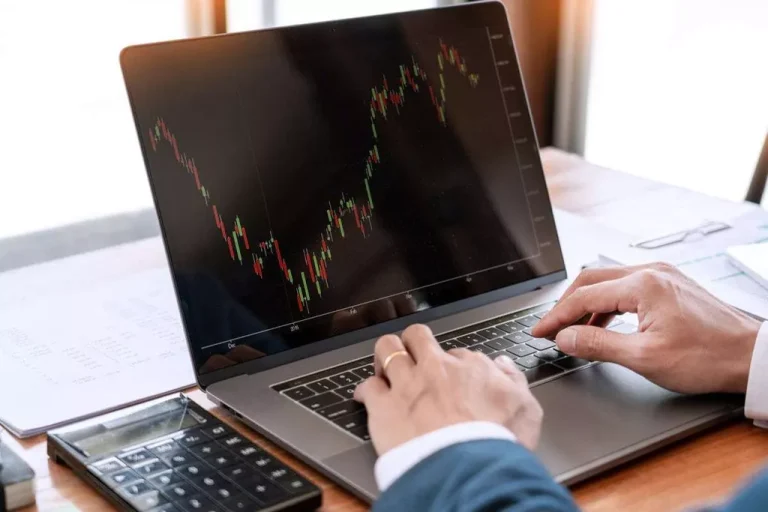Like a person stock, an ETF trades on an trade throughout the day. Unlike mutual funds, ETFs can be sold quick, bought on margin and infrequently have options chains attached to them. These transactions may impression the liquidity of underlying safety markets.

ETF liquidity relies on the dynamics within the supplier and secondary markets. Dealers performing as APs can create and redeem ETF shares to fulfill supply and demand adjustments in the ETF and hold its market worth according to its NAV. On the secondary market, ETF shares with larger buying and selling volume and tighter spreads are often more liquid. Secondary market liquidity is the convenience with which investors should buy or sell ETF shares on exchanges, very like individual stocks. This liquidity is seen by way of metrics such as buying and selling quantity, market depth, and the bid-ask unfold.
Spinoff Trading Desk
Exchange The marketplace the place securities, commodities, derivatives and other financial tools similar to ETFs are traded. Exchanges, such as inventory exchanges, allow for honest and orderly trading and efficient circulation of securities costs. Exchanges give companies trying to market publicly listed securities the platform to do that.
Before trading any ETF, traders should understand the liquidity of the ETF’s underlying constituents, which will impression an investor’s execution prices and overall expertise buying and promoting an ETF. This process occurs in reverse with redemption orders, if market makers must liquidate the ETF basket delivered from the AP and return the proceeds to the vendor of ETF shares. In the end, creation and redemption of ETF shares in the main market may result in transactions in underlying safety markets. Secondary market liquidity, reflected by the bid-ask spread and trading volume on buying and selling platforms, only indicates the liquidity in the secondary market.
Alternatively, mutual funds provide end-of-day liquidity, with all orders processed on the closing NAV. This primary difference makes the liquidity experience between ETFs and mutual funds distinct, catering to completely different investor preferences and techniques. Perhaps the best-known core liquidity providers are the establishments that underwrite preliminary public choices. When a company goes public on a stock exchange, it selects an underwriter to manage the process. The underwriter buys the stock immediately from the corporate and then resells it in large batches to large financial establishments who then make the shares obtainable directly to their clients. APs are the one counterparties allowed to enter creation and redemption orders with the fund.
If the value of the underlying securities falls to $99 while the worth of the ETF remains $100 (i.e., the fund is trading at a premium), an AP might profit by creating new ETF shares. Specifically, the AP might purchase the underlying securities for $99, ship them to the ETF issuer to create shares of the ETF and sell the ETF shares at the market worth of $100. A market maker regularly supplies two-sided (buy and sell) quotes to purchasers on the trade.
Who’re The Etf Issuer’s Liquidity Players?
Primary Market The market where Authorized Participants (APs) create and redeem ETF shares in-kind, sometimes in blocks of fifty,000 shares, which are generally known as creation models. Short sellers pay a payment to the lender so that they’ll borrow ETF shares to promote available within the market after which purchase them back later at a lower cost to lock in a revenue before returning them to the lender. In exchange for ETF shares, the short seller supplies collateral, typically required to be greater in value than the borrowed shares.
These are the market makers looking to provide bitcoin liquidity for the BlackRock ETF – TheStreet
These are the market makers looking to provide bitcoin liquidity for the BlackRock ETF.
Posted: Tue, 31 Oct 2023 07:00:00 GMT [source]
If creations and redemptions are easily facilitated, the precise buying and selling quantity in the ETF could not matter as much. Alternatively, even if an ETF has a high buying and selling quantity and plenty of interest, however the underlying shares are illiquid, APs might discover engaging in creations and redemptions tough. A liquidity supplier (LP) is liable for the market steadiness and minimum gaps between the ask and bid prices. Furthermore, providers make certain investors’ bids or ask offers are executed instantly, otherwise, a buyer or vendor wants to wait for the response of pure buyers and sellers, facing possible losses. Large buying and selling firms function market makers throughout the capital markets, together with those for equities, fixed-income securities, and derivatives.
Licensed Participants (ap)
The increased promoting stress could drive the price of the ETF shares nicely below the NAV. An AP buys the ETF shares from the market and returns them to the ETF issuer. The AP receives a basket of the underlying clean tech stocks in exchange.
Discover the method to review your portfolio’s liquidity profile — and the way ETF creation and redemption enhances liquidity. This document has been ready only for these persons to whom Invesco has offered it for informational purposes solely. This document just isn’t an offering of a financial product and is not meant for and shouldn’t be distributed to retail clients https://www.xcritical.com/ who’re resident in jurisdiction the place its distribution isn’t authorized or is unlawful. Circulation, disclosure, or dissemination of all or any part of this doc to any person without the consent of Invesco is prohibited. Passive management and the creation/redemption course of might help minimize capital gains distributions.
Aps: Key Gamers In Etf Creations And Redemptions
Market makers are key liquidity providers within the ETF ecosystem that ensure continuous and environment friendly ETF buying and selling within the secondary market. There are many different elements that influence an ETF’s liquidity in both of those markets. In the first market, the liquidity of the individual parts makes the difference. Authorized individuals which are unable to purchase the components can not effectively create ETFs, while illiquid costs of the elements might make redeeming the ETFs less engaging. After all, liquidity dangers should be discounted in any illiquid security’s valuation as a end result of slippage.

Most ETFs search to intently match the performances of an established stock or bond index, such because the S&P/ASX 200. Actively managed funds attempt to beat the index, which can be exhausting to do particularly after charges and taxes. APs dynamically modify the number of ETF shares excellent, and in doing so, enhance efficiency and cut back prices for ETF buyers. IShares have a number of market makers on all ETFs including however not limited to the designated market maker. The data on this document has been ready with out bearing in mind any investor’s funding objectives, monetary scenario or particular needs.
APs and market makers have an economic incentive to reap the benefits of arbitrage alternatives available in the market. This includes trading the ETF shares or underlying securities when there are small worth differences between the 2. Exchange traded funds (ETFs) present access to a diversified portfolio of securities such as stocks or bonds. They are versatile funding autos that can be used inside a portfolio in some ways to satisfy totally different funding needs and aims. The opinions and commentary offered do not take into account the funding objectives or financial situation of any particular investor or class of investor. Please contemplate your individual circumstances earlier than investing decision.
Who Are The Most Effective Liquidity Suppliers, And The Way Can A Brokerage Company Fulfill The Demand Of Its Traders?
For illustrative purposes solely and not meant to be a suggestion to take any explicit funding motion. In episode four of “Investing in the new possible” podcast collection, Tom Digby and Kunhee Park spotlight how ETFs can get their liquidity and the significance of understanding the mechanism. In this article, we are going to delve into the investment priorities plan that means, the importance of IPPs, how they’re used, and how one can create such a plan for their own enterprise.

Despite the scale of the order, the price of the bouquets stays roughly the same because of the elevated supply. The AP can then hold these shares in their inventory or promote them to investors in the secondary market. Each AP has an settlement with an ETF issuer that gives it the right (but not the obligation) to create and redeem ETF shares. APs might act on their very own behalf or on behalf of market participants and are not compensated by ETF issuers. Many players assist support the mechanism that enables ETFs to function effectively. We look at two establishments — authorised individuals (APs) and market makers—that play central roles in ensuring that ETF prices are accurate, and that buying and selling is smooth, in all market conditions.
Here, shopping for or selling ABC shares would not obtain costs as favorable, and trading massive quantities could noticeably change the value. Through this simplified example, it’s evident how liquidity impacts the convenience of buying and selling and the soundness etf liquidity of the market value, highlighting its importance in funding choices. In the primary market, a selected kind of entity known as an “authorized participant” (AP) can change the provision of ETF shares out there.
High trading volumes and slim bid-ask spreads frequently signify good liquidity, making it simpler and cost-effective for buyers to commerce. ETF liquidity has two elements – the amount of units traded on an exchange and the liquidity of the person securities in the ETF’s portfolio. ETFs are open-ended, which means models can be created or redeemed primarily based on investor demand. This process is managed by market makers who buy and promote ETFs all through the day. How easily the market maker can deliver or promote securities is determined by the liquidity of individual securities in the ETF portfolio. ETF liquidity is especially driven by the liquidity of the underlying constituents held by the ETF.
Lascia un commento